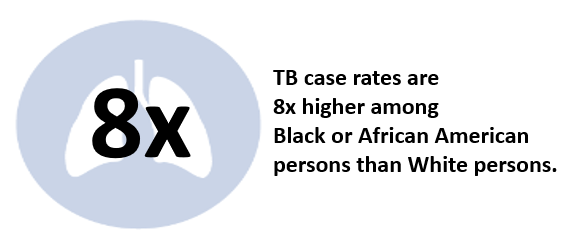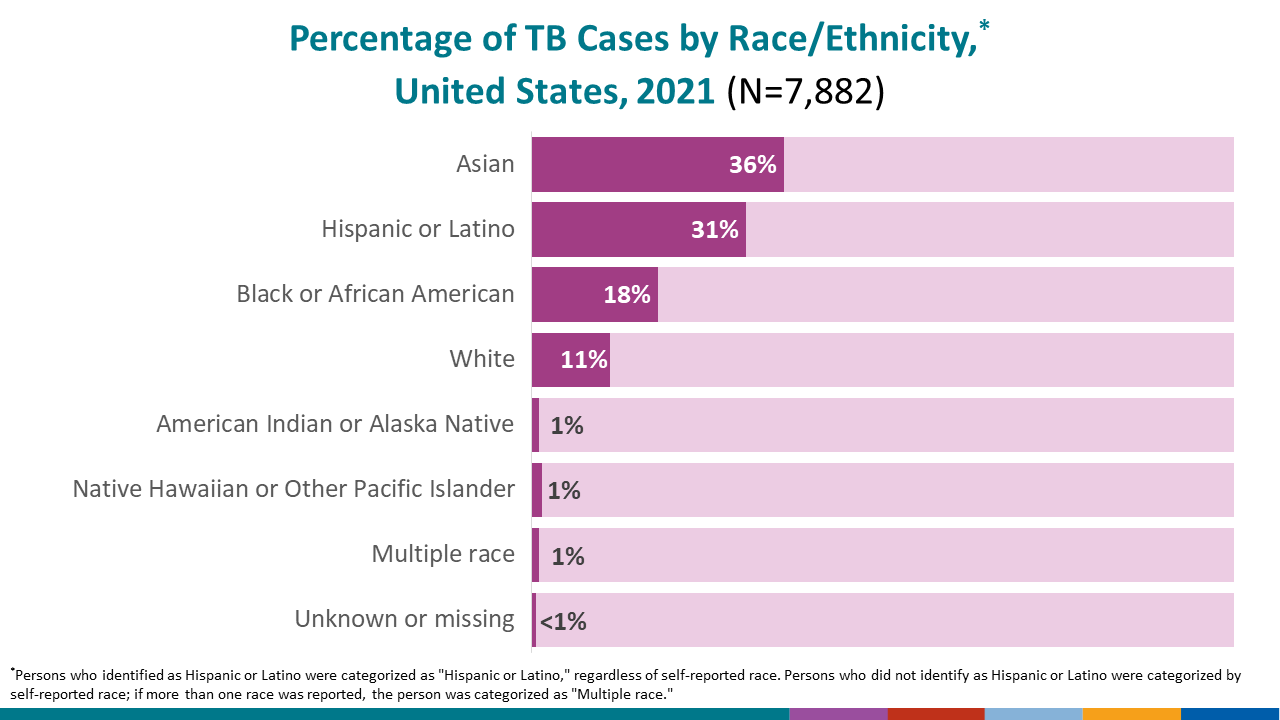Since 1993, the rates of TB (tuberculosis) in the United States have declined in almost all racial and ethnic groups. Rates of TB disease in Black or African American persons* have been nearly cut in half (from 6.2 cases per 100,000 persons in 2011 to 3.4 cases per 100,000 persons in 2021) over the past decade1. This post “TB is 8 times higher for Black than White Americans” seeks to provide current and relevant information from a trusted source.
However, Black or African American persons in the United States continue to be affected by TB at a greater rate compared to White persons.
Addressing the TB disparity among Black or African American persons is an important priority; prevention and control efforts should be targeted at this population.
By the Numbers
In 2021, U.S. state, local, and territorial health agencies reported a total of 7,882 TB cases to the
- In 2021, TB disease was reported in 1,420 non-Hispanic Black or African American persons in the United States, accounting for 18.0% of all people reported with TB disease nationally.
- The rate of TB disease among Black or African American persons is 3.4 cases per 100,000 persons.
- The TB case rate is 8 times higher for non-Hispanic Black or African American persons than for non-Hispanic White persons.
- Read more in Reported Tuberculosis in the United States, 2021.

Prevention Challenges
TB is a challenging disease to diagnose, treat, and control. Dwindling resources and loss of public health capacity, including access to care, and maintaining clinical and public health expertise, add to the challenge. It is critical to reach those populations at the highest risk for TB, and to identify and implement innovative strategies to improve diagnosis and treatment.
Ending TB will require a dual approach of maintaining and strengthening current TB control priorities while increasing efforts to identify and treat latent TB infection in populations at risk for TB disease.
Similar to other racial and ethnic minority groups, Black or African American persons face several challenges that contribute to higher rates of TB. Challenges may include:

- Treatment for TB disease can be lengthy. Patients are often unable or reluctant to take medication for several months.
- For people with TB disease, inadequate treatment can lead to treatment failure, relapse, ongoing transmission, and the development of drug resistance.
- For people with latent TB infection, treatment for a condition with no symptoms of illness may not be a priority.
- Socioeconomic Factors
-
-
- People experiencing poverty, including those with limited access to quality health care, employment opportunities, housing, and transportation, and those who disproportionately experience adverse health outcomes. These factors can directly or indirectly increase the risk of TB disease and present barriers to treatment.
- Language and cultural barriers, including health knowledge, the stigma associated with the disease, values, and beliefs may also place certain populations at higher risk. Stigma may deter people from seeking medical care or follow-up care.
-
* Note: Persons who identified as Hispanic or Latino were categorized as “Hispanic or Latino,” regardless of self-reported race. Persons who did not identify as Hispanic or Latino were categorized by self-reported race; if more than one race was reported, the person was categorized as “Multiple races.”
Jay Harold hopes you enjoyed this post, “TB is 8 times higher for Black than White Americans” Please share it and read more about Jay Harold here. Please take this advice from Muhammad Ali and give it back to others. “Service to others is the rent you pay for your room here on earth.”
Click this link to get free Health and Wealth information to improve your life. Play the free “Slow Roll Through Civil Rights” Game found on the Jay Harold website. Enjoyed this post? Please share it and read more here.





